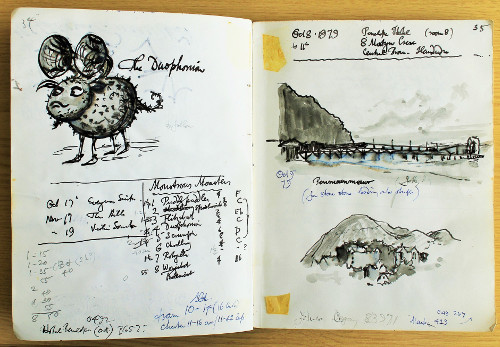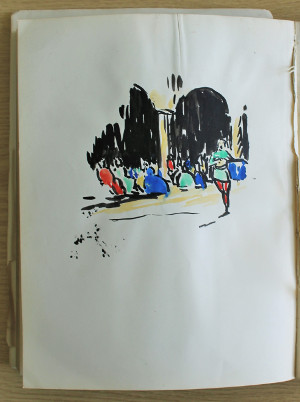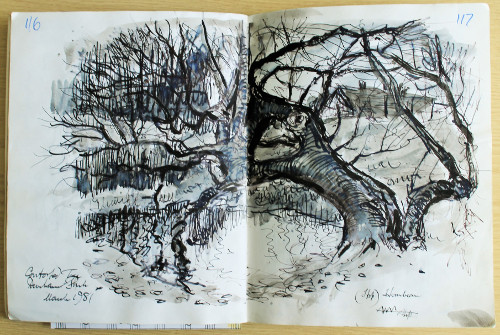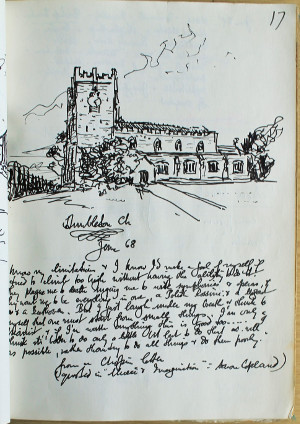Archives Hub feature for August 2015
The Royal Academy of Dance (RAD) was founded in 1920, a time when there was a heightened interest in the establishment of a British ballet tradition. As a result, the RAD’s archive collections contain a variety of materials that relate to this period. The following article draws on resources from several of the archives and special collections held in the RAD’s Philip Richardson Library, some of which are also described on the Archives Hub.

At the turn of the twentieth century, ballet in Britain existed primarily in Music Halls. Danish-born Adeline Genée was the star of London’s Empire Theatre between 1897 and 1909 and it was here that Phyllis Bedells became the first British ballerina to hold the position of Première Danseuse in 1914. Bedells was also the first to resist the pressure upon English dancers to Russianise their names after the status of ballet began to change in 1911 with the appearance of Serge Diaghilev’s Ballets Russes in London, and in 1912 the celebrated Russian dancer Anna Pavlova made London her home. Both Diaghilev and Pavlova employed English dancers disguised with Russian-sounding names such as Alicia Markova (Lillian Marks), Anton Dolin (Pat Kay) and Hilda Butsova (Hilda Boot).
Audiences began to appreciate the artistry of fine performers and the production of great nineteenth-century repertory works alongside new ground-breaking choreography, design and music. By the 1920s strong moves were afoot to establish a British ballet tradition, spearheaded by Philip Richardson – the editor of the Dancing Times magazine. Alongside Adeline Genée, Phyllis Bedells, Tamara Karsavina, Edouard Espinosa and Lucia Cormani, Richardson had co-founded the Association of Operatic Dancing of Great Britain (AOD) in 1920 (later to become the Royal Academy of Dancing – RAD). The AOD set the standard by which ballet should be taught and examined. The next step was to ensure that ballet could provide a viable vocation for dancers and associated artists in this country.
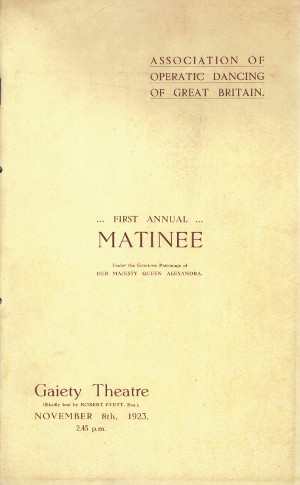
In November 1923, The AOD presented its first ‘Annual Matinée’ at the Gaiety Theatre, the object of which was to draw attention to the technical capabilities of the Association’s members. The programme included a divertissement by Philip Richardson entitled No English Need Apply, which satirised the prejudice felt to exist against British dancers at the time and the assumed greater success of dancers from the continent.
Established artists such as Phyllis Bedells and Tamara Karsavina presented their own individual programmes of ballet during the 1920s, but it wasn’t until 1926 that bookseller and publisher Cyril Beaumont attempted to establish one of the first British ballet companies. The Cremorne Company – (named after the famous pleasure gardens of the early nineteenth century) – debuted at the New Scala Theatre on March 11 of that year.

Beaumont enlisted the help of ballet teacher Flora Fairbairn and although their repertory was not particularly successful, the cast included Penelope Spencer, Stanley Judson and marked the stage debut of budding choreographer Frederick Ashton.
By this time, both Ninette de Valois and Marie Rambert had established studios in London. The Marie Rambert Dancers, including Frederick Ashton, appeared in a London Revue called Riverside Nights in June 1926 presenting Ashton’s first choreography – A Tragedy of Fashion; or, The Scarlet Scissors. Meanwhile, Ninette de Valois was pursuing her idea of establishing a repertory ballet company at Lilian Baylis’ Old Vic Theatre and was engaged as ballet mistress and choreographer at both the Festival Theatre in Cambridge and the Abbey Theatre in Dublin.
In July 1929 the AOD presented a ‘Special Matinée’ at the Gaiety Theatre which included an appearance and choreography by Ninette de Valois. Following the performance critic Arnold Haskell wrote to the Dancing Times to express his pleasure at “the dancing of the English girls who have been trained under the principles of the Association, which is rapidly taking the place of a State organisation.” *
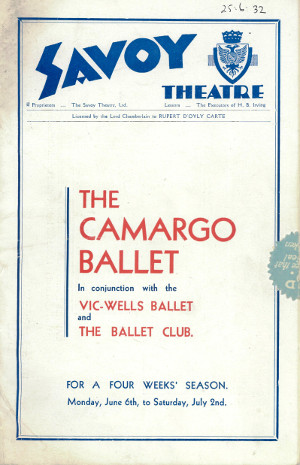
Following the death of Serge Diaghilev in August 1929, the Ballets Russes company disbanded. Philip Richardson, through the Dancing Times, encouraged the founding of a society whose aim would be to produce regular programmes of ballet in London. The ‘Camargo Society’ was formed in January 1930 and the committee included Richardson, Arnold Haskell, Phyllis Bedells, Lydia Lopokova and Edwin Evans as chairman. The first performances were given in October of that year and included choreography by Frederick Ashton, Ninette de Valois and Penelope Spencer. In 1932 the Camargo Society presented a season of ballet at The Savoy Theatre in conjunction with the recently formed Ballet Club and Vic-Wells Ballet, set-up by Marie Rambert and Ninette de Valois respectively. The three companies for a short time shared dancers, choreographers, composers and designers. In 1933, following two Gala performances at the Royal Opera House in Covent Garden, the Camargo Society was closed and the remaining profits and repertory works were handed over to the Vic-Wells company, later to become the Royal Ballet.
In 1932, Adeline Genée arranged for an ‘English Ballet Company’ to travel to Denmark to appear at the Royal Theatre in Copenhagen. The company was made up of members of the AOD and Phyllis Bedells appeared alongside other famous British ballet names such as Alicia Markova, Anton Dolin and Ruth French. Ninette de Valois directed the performances and the programme included repertory from the Camargo Society and the recently formed Vic-Wells ballet company. Although it was not intended to be a permanent company, the ‘English Ballet Company’ was an important step for the promotion of British Ballet on an international level.
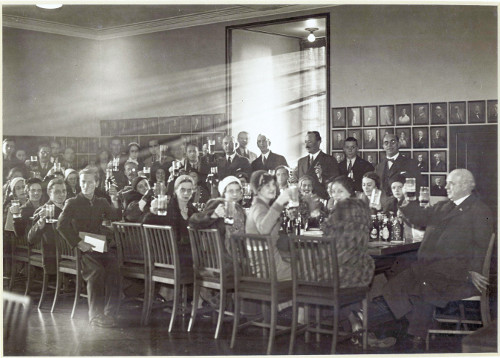
* Quoted by ‘The Sitter-Out’ in the dancing Times, New Series no. 237, August 1929, p. 418
Eleanor Fitzpatrick
Assistant Library & Research Services Manager
Royal Academy of Dance
Related:
Browse the collections of the Royal Academy of Dance on the Archives Hub.
All images copyright the Royal Academy of Dance, and reproduced with the kind permission of the copyright holder.

